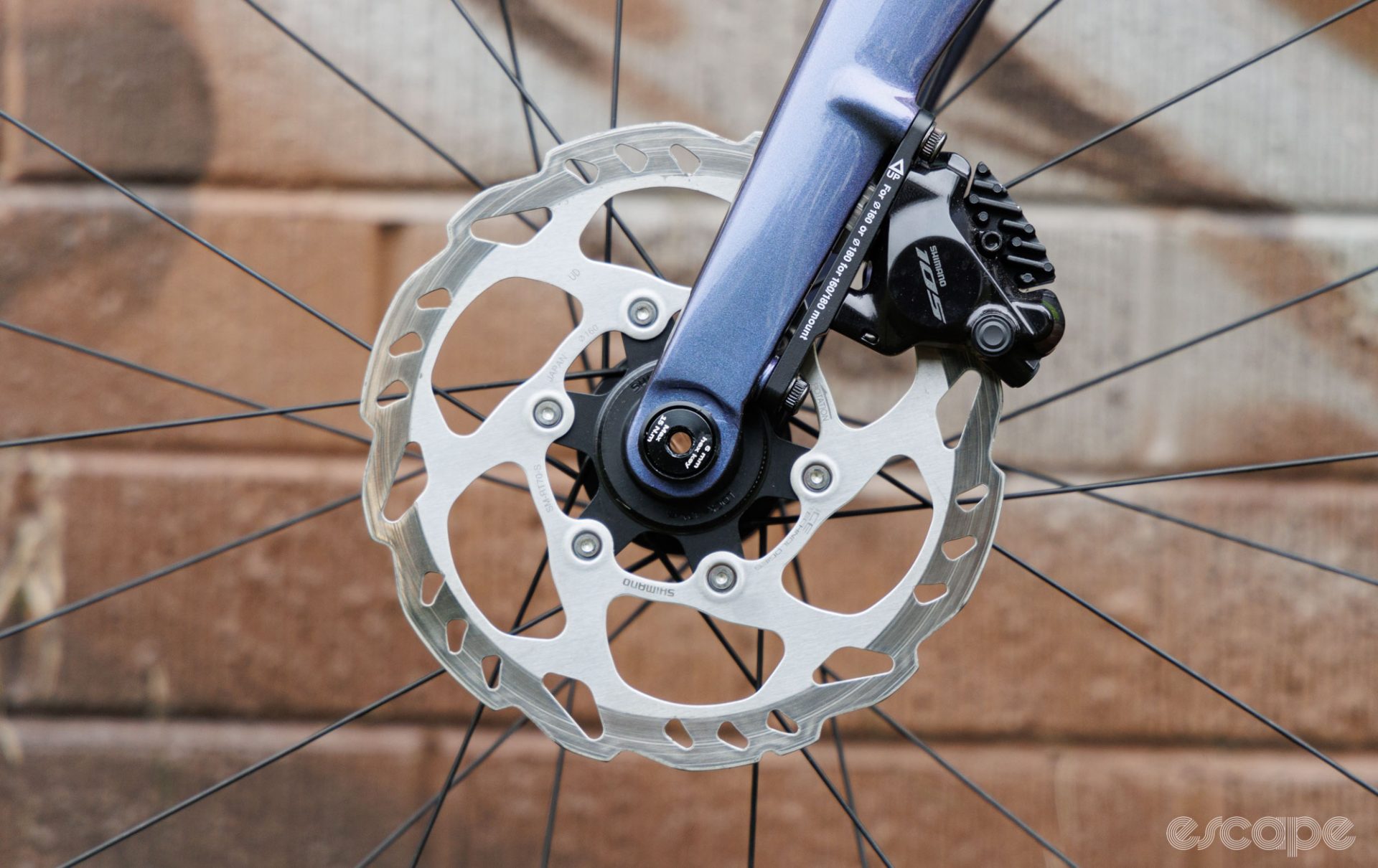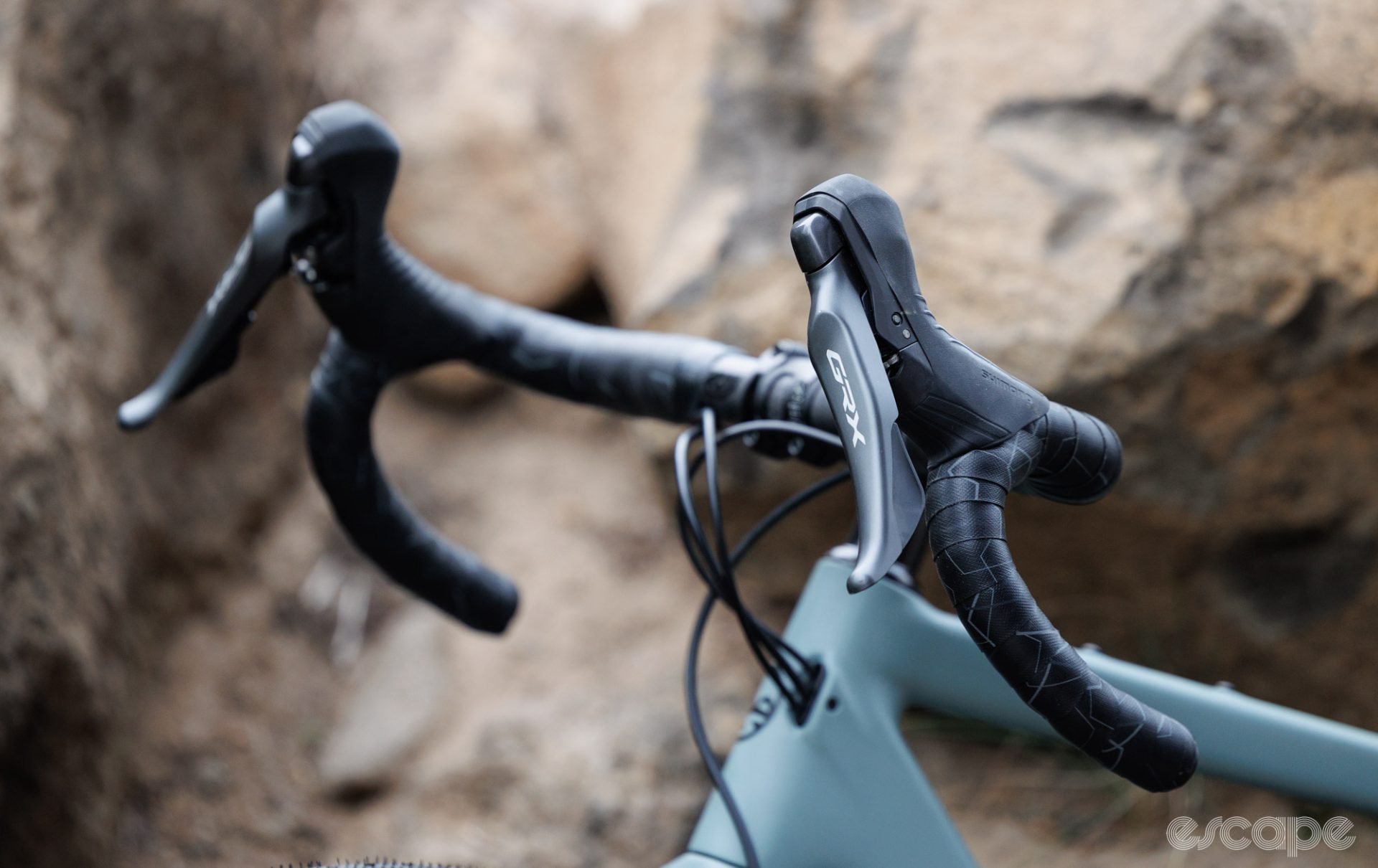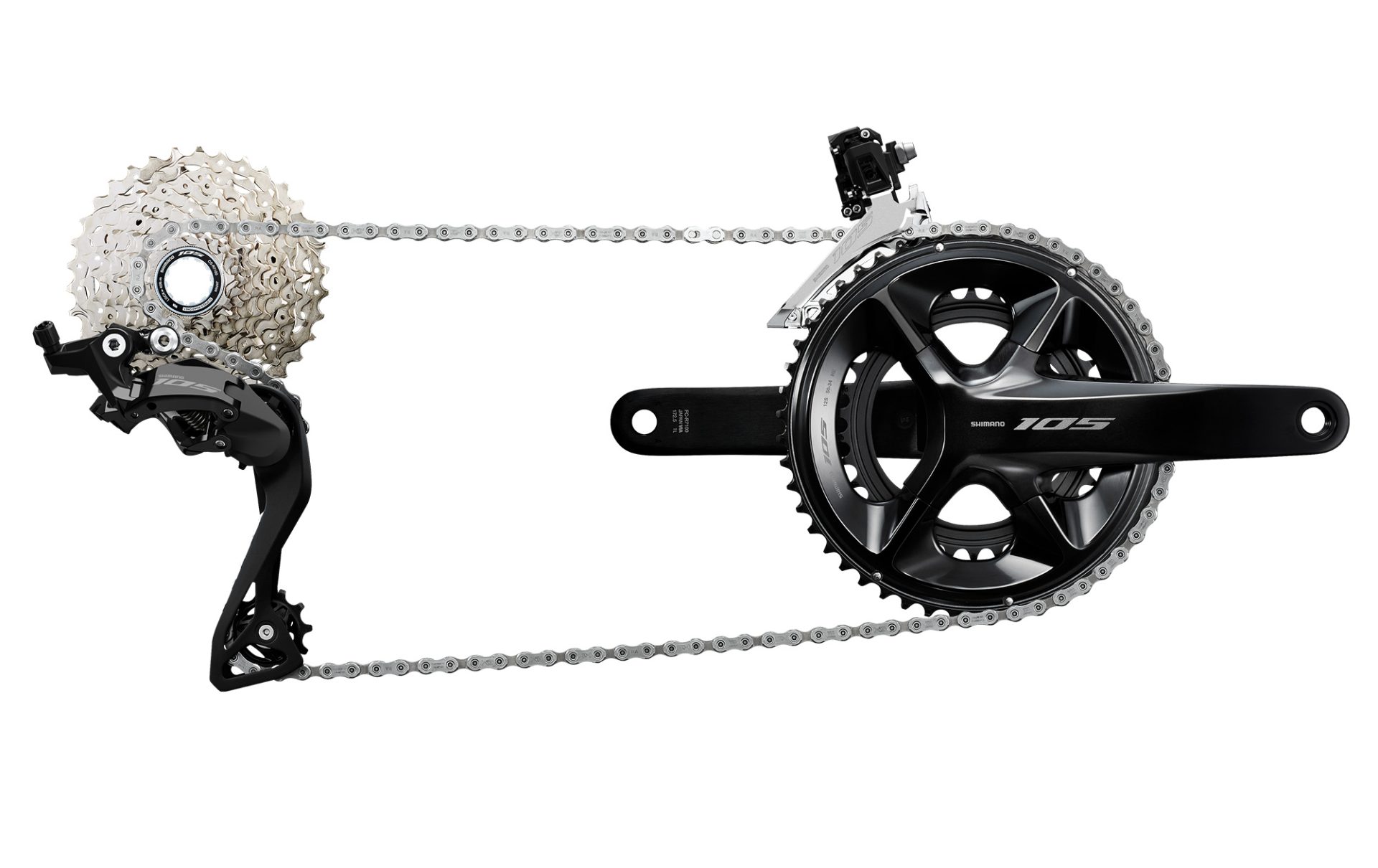It’s been a little over a year since Shimano released its 105 Di2 to match its more premium 12-speed groupsets. At the time, the company was coy over whether it would produce a mechanical shifting equivalent.
Now, Shimano has released the details of a group that’s sure to appear on many new road bikes where electronic shifting either isn’t ideal for the budget or meets the desires of those who prefer Bowden cables over charging wires.
The new 105 mechanical 12-speed has launched at the same time as GRX RX820 12-speed, the latter being a new groupset I’ve had a brief amount of riding on to date. By contrast, new 105 mechanical isn’t something I’ve used or even held, and so I’ll keep it brief.
For those keen on audio, you’ll find a special podcast episode that discusses both new GRX and 105 12-speed mechanical groupsets.
Same same
In many ways, if you’re familiar with Shimano’s 105 Di2, then you likely already know the big details of 105 mechanical. Many of the parts are shared between the electronic and mechanical groups, including the chain, cassettes, cranks, brake calipers, and brake rotors.
Shimano 105 12-speed offers the choice between 11-34T and 11-36T cassettes. These feature slightly simpler downshifting (shifting to a harder gear) ramps versus Ultegra and Dura-Ace HG+ cassettes. The accompanying chain remains the same M7100 model that’s already shared across 105 Di2 and SLX mountain bike.
The 105 cranks are available in lengths of 160, 165, 170, 172.5 and 175 mm. And there are just two chainring size options: 50/34 or 52/36T.

The 105 brake calipers offer the same revised, easier-to-bleed design shared by Dura-Ace and Ultegra. And like those more premium calipers, these also provide 10% more pad clearance when compared against older 10 and 11-speed groupset iterations.
Almost any Shimano disc brake rotor will work, but the official matching model is the SM-RT70 – a more cost-effective centerlock rotor that retains Shimano’s premium IceTech cooling technology.

The new stuff
As you may expect, anything that pulls or is pulled by a cable is new – the shifters, rear derailleur, and front derailleur. And things are pretty simple here, with only a single choice of each (except for different front derailleur clamp options).
Shimano previously offered its 105 R7000 11-speed shifters in both rim brake and hydraulic disc, and on top of that, there were two size choices (regular, and a rarer shorter reach version intended for those with smaller hands).
The new 105 R7100 is only available in a hydraulic disc brake configuration. Similarly, the revised hood shape is now only available in one size, which Shimano claims is approximately in the middle of the two previously available options. Shimano has also revised the brake lever blade shape for a shorter reach.

It’s a similar story for the rear derailleur, with Shimano simplifying things by only offering a long cage version to fit the offered wider-range cassettes.
Cross compatibility
Being 12-speed, it’s good to note that all of Shimano’s 12-speed road chains, cassettes and cranksets are cross-compatible. As such, you could buy a bike with new 105 and upgrade the crank and cassette to drop weight, make improvements to the shift quality (for example, by upgrading to an Ultegra or Dura-Ace HG+ cassette), or opt for more race-focussed gearing ratios.
I’m afraid it’s slim pickings for backward compatibility with other Shimano mechanical drivetrains. While it’s too early to know for absolute certain, the pull ratios are said to be different to anything previously from the company across road and mountain. The only official cross-compatible components are those in the new GRX 12-speed line-up.

The news of this being a hydraulic disc brake-only groupset is a further blow for those with an older rim brake bike. There are more premium Di2 options, older 11-speed, or current Tiagra 10-speed for this demand.
Pricing and weights
The new R7100 has a claimed groupset weight of 3,026 grams. That figure excludes the bottom bracket and is based on a 172.5 mm 50/34T crankset, 11-34T cassette, and 160 mm brake rotors. Compared to 11-speed 105 R7000, the new stuff weighs approximately the same by adding a few grams in some parts and saving grams in other pieces.
More expensive options are, of course, lighter. 105 Di2 carries a claimed weight of 2,991 g, Ultegra Di2 12-speed is 2,690 g, and the top-tier Dura-Ace is 2,437 g.
A R7100 groupset retails for US$1,005 / £TBC / AU$1,685. By comparison, a 105 Di2 12-speed groupset is US$1,855, while the previous generation 11-speed R7000 groupset is US$1,110.
It shouldn’t take long before we see new 105 on complete bikes, while aftermarket parts are expected to arrive from October (region-dependent).
More to come?
While we have our hands on new GRX, it may be a little longer before we can provide an opinion on new 105 12-speed mechanical. You can bet that we’ll be looking to test bikes at an appropriate price point for this groupset.
What did you think of this story?

